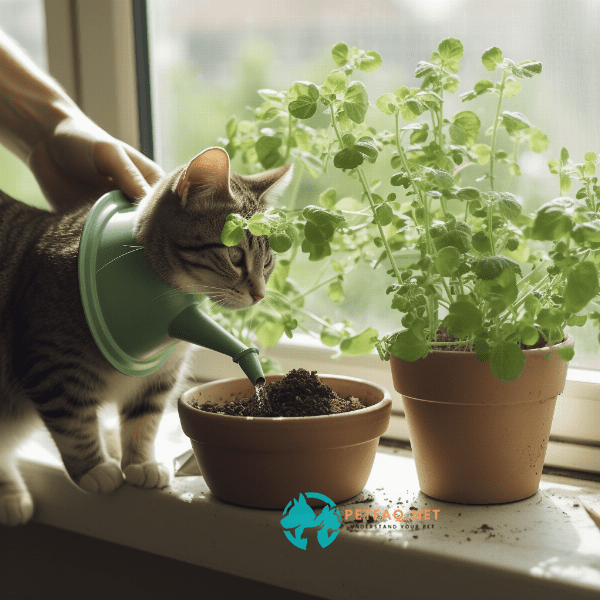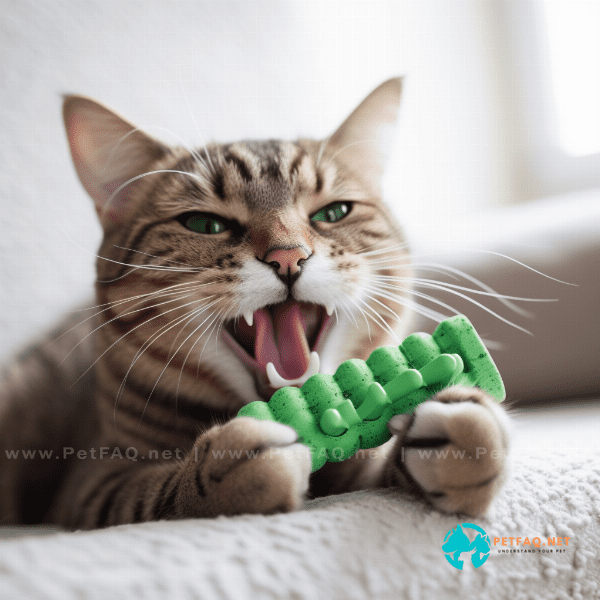Table of Contents
- What is Catnip and How Does it Affect Cats?
- The History of Catnip Use in Feline Domestication
- Is Catnip Safe for Cats? Common Concerns and Misconceptions
- The Science Behind Catnip’s Effects on Cats’ Behavior and Physiology
- Can Cats Develop an Addiction to Catnip?
- Alternatives to Catnip for Cat Enrichment and Play
- How to Introduce Catnip to Your Cat Safely and Effectively
- Catnip and Medical Conditions: What You Need to Know
- Catnip in Multi-Cat Households: Considerations for Harmony and Safety
- Conclusion: Understanding the Benefits and Risks of Catnip for Your Feline Friend
What is Catnip and How Does it Affect Cats?
Catnip is a perennial herb from the mint family that contains a chemical compound called nepetalactone. It is a common household item for many cat owners as it has been known to induce a range of behaviors in cats, including playfulness, relaxation, and sometimes even aggression. In this section, we will explore how catnip affects cats and what makes it such a unique substance.
How Does Catnip Work?
When a cat inhales or ingests catnip, the nepetalactone binds to certain receptors in the cat’s brain, which triggers a response in the cat’s central nervous system. This response varies between individual cats, but it typically leads to a range of behaviors, including rolling, rubbing, vocalizing, and playing. Some cats may also become hyperactive or aggressive, while others may become relaxed and calm.
Is Catnip Safe for Cats?
One of the most common questions that cat owners have is whether catnip is safe for their feline friends. The good news is that catnip is generally considered safe for cats, and there are no known negative long-term effects. However, it’s essential to note that not all cats will have a positive response to catnip, and some may not react to it at all.
How Much Catnip Should You Give Your Cat?
It’s important to give your cat catnip in moderation. While catnip is generally considered safe, too much of it can cause an upset stomach or diarrhea in cats. Additionally, some cats may become overstimulated or aggressive when exposed to too much catnip. As a general rule, it’s best to give your cat a small amount of catnip at a time and monitor their behavior to ensure they don’t become overstimulated or sick.
In conclusion, catnip can be a fun and safe way to engage with your feline friend. While there are some concerns about whether Catnip is bad for cats, most experts agree that it is safe in moderation. As with any substance, it’s essential to be mindful of your cat’s behavior and reactions and to consult with your veterinarian if you have any concerns.
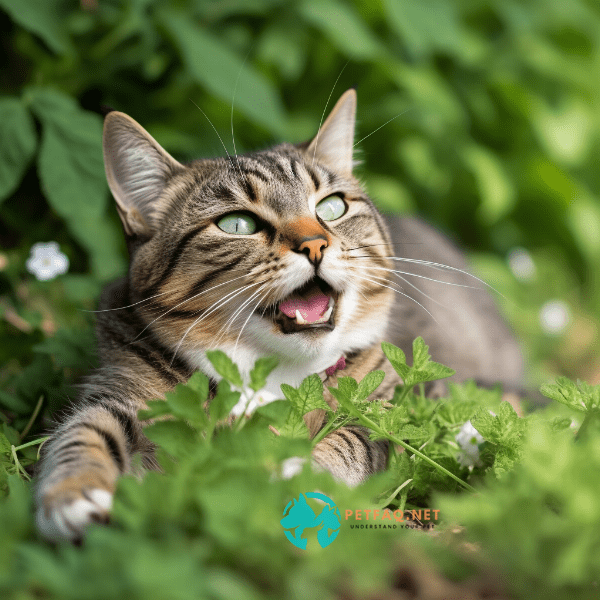
The History of Catnip Use in Feline Domestication
Catnip has been used for centuries to entertain and engage with cats. Its use dates back to ancient times, where cat owners would give catnip to their feline companions as a form of entertainment. In this section, we will explore the history of catnip use in feline domestication and how it became a popular tool for cat owners.
Catnip in Ancient Times
Catnip has a long history of use in ancient civilizations. It was used in ancient Egypt as a way to attract cats to their homes, and it was also used in ancient Rome as a form of medicine for humans. In the Middle Ages, catnip was used in Europe to repel rodents and insects from homes.
Catnip in America
Catnip was introduced to North America by early settlers, who brought it over from Europe. It quickly became popular among cat owners, who used it to entertain and engage with their feline companions. In the 20th century, catnip toys and treats became widely available, making catnip even more accessible to cat owners.

Is Catnip Safe for Cats? Common Concerns and Misconceptions
As we have mentioned earlier, catnip is generally considered safe for cats, but there are still some common concerns and misconceptions about its use. In this section, we will address some of these concerns and misconceptions to help you better understand the effects of catnip on your feline friend.
Catnip Addiction
One of the most common concerns about catnip is that it may be addictive to cats. While some cats may become very excited or even hyperactive when exposed to catnip, there is no evidence to suggest that it is addictive. Most cats will self-regulate and stop using catnip once they have had enough.
Negative Long-Term Effects
Another concern that some cat owners have is that catnip may have negative long-term effects on their cats. However, there is no evidence to suggest that catnip is harmful to cats in the long term. Most cats will simply lose interest in catnip after a short period of time.
Catnip Sensitivity
While most cats will have a positive response to catnip, there are some cats that may be sensitive to its effects. Cats that are sensitive to catnip may become overly stimulated or even aggressive when exposed to it. It’s important to monitor your cat’s behavior when using catnip to ensure that they don’t become overstimulated or sick.
In conclusion, while there are some concerns and misconceptions about catnip, it is generally considered safe for cats. There is no evidence to suggest that catnip is addictive or harmful to cats in the long term. If you have any concerns about using catnip with your feline friend, it’s always best to consult with your veterinarian.
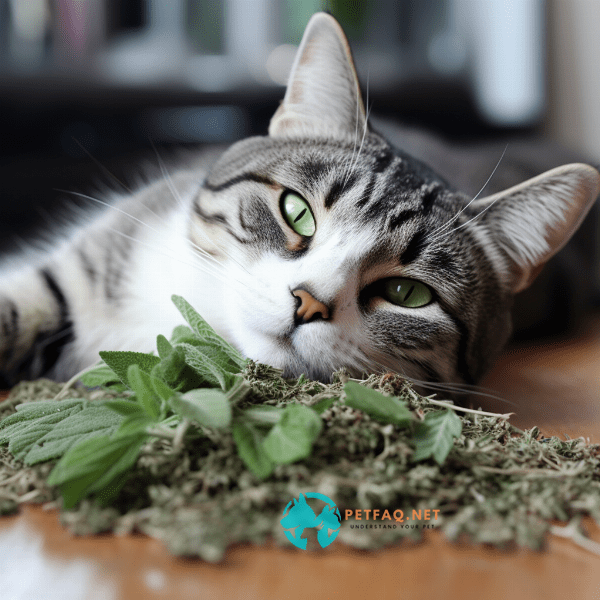
The Science Behind Catnip’s Effects on Cats’ Behavior and Physiology
While we know that catnip can have a profound effect on cats, the exact science behind its effects is still not fully understood. In this section, we will explore the latest research on catnip’s effects on cats’ behavior and physiology.
How Catnip Affects Cats’ Behavior
Research has shown that catnip affects the brain chemistry of cats by stimulating certain receptors in the brain. This stimulation leads to a range of behaviors, including increased activity, rolling, and rubbing. It’s important to note that not all cats will have the same reaction to catnip, and some may not react to it at all.
How Catnip Affects Cats’ Physiology
Catnip not only affects cats’ behavior but also their physiology. When cats come into contact with catnip, it can cause their heart rate to increase, and their breathing to become more rapid. Some cats may also experience dilated pupils or drooling. These effects typically last for only a short period of time.

Can Cats Develop an Addiction to Catnip?
One of the most common concerns that cat owners have about catnip is whether their cats can develop an addiction to it. In this section, we will explore the latest research on catnip addiction in cats and whether it is a real concern.
The Science Behind Addiction
Before we dive into catnip addiction, it’s essential to understand the science behind addiction. Addiction is a complex condition that affects the brain’s reward system. When a person or animal experiences pleasure, the brain releases dopamine, which creates a sense of pleasure and reinforces the behavior.
Catnip and Addiction
While catnip can have a significant impact on cats’ behavior, there is no evidence to suggest that it is addictive. Cats may enjoy playing with catnip toys and rolling around in catnip, but they are unlikely to seek it out compulsively. Most cats will self-regulate and stop using catnip once they have had enough.
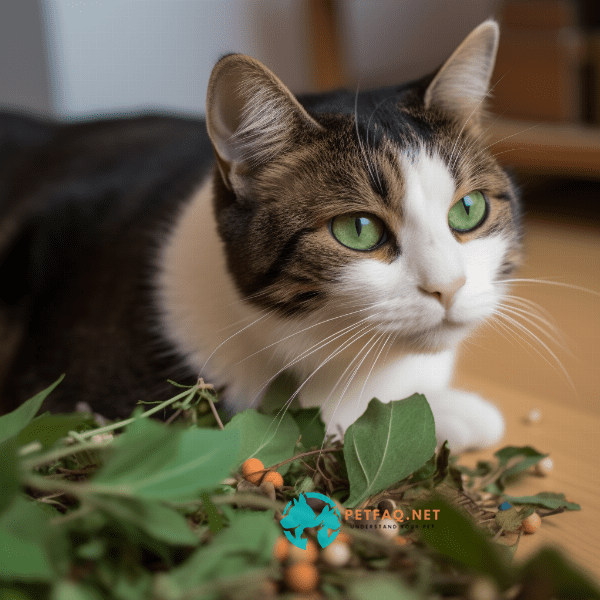
Alternatives to Catnip for Cat Enrichment and Play
While catnip is a popular and safe way to engage with your feline friend, there are also many other alternatives to consider for cat enrichment and play. In this section, we will explore some alternatives to catnip that you can use to keep your cat happy and healthy.
Silvervine
Silvervine is a plant that is native to East Asia and is similar to catnip in its effects on cats. Silvervine contains a compound called actinidine, which can have a more potent effect on cats than catnip. Many cat owners have reported that their cats respond more strongly to silvervine than catnip.
Valerian Root
Valerian root is an herb that is often used to treat anxiety and sleep disorders in humans. It can also have a calming effect on cats and may be a good alternative to catnip for cats that become overly stimulated or aggressive when exposed to catnip.
Interactive Toys
Interactive toys are an excellent way to engage with your cat and provide them with mental stimulation. Toys such as puzzle feeders and laser pointers can help keep your cat entertained and engaged. Additionally, playing with your cat using toys like feather wands or stuffed mice can help strengthen the bond between you and your feline friend.
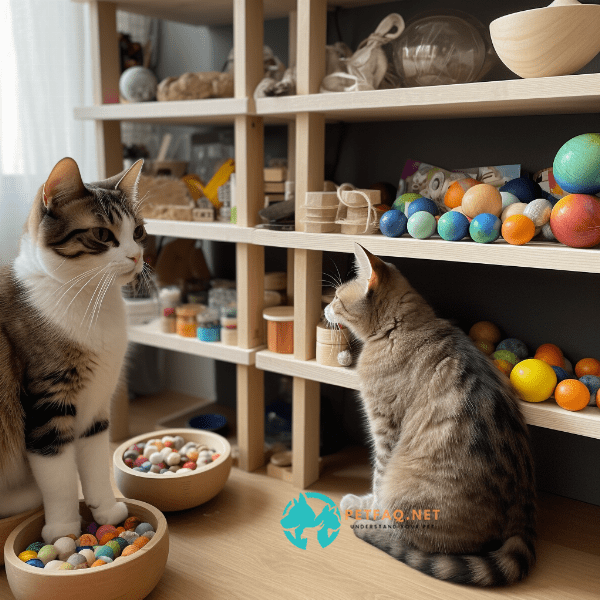
How to Introduce Catnip to Your Cat Safely and Effectively
If you’re interested in introducing your cat to catnip, it’s important to do so safely and effectively. In this section, we will explore some tips for introducing catnip to your cat.
Start with Small Amounts
When introducing your cat to catnip, it’s important to start with small amounts. Give your cat a small amount of catnip and observe their behavior. If your cat responds positively to the catnip, you can gradually increase the amount over time. It’s important to monitor your cat’s behavior and reactions to ensure that they don’t become overstimulated or sick.
Use Quality Catnip
Not all catnip is created equal. It’s important to use high-quality catnip that is fresh and potent. Old or stale catnip may not have the same effect on your cat and may even be harmful to their health.
Mix Things Up
While catnip can be a fun way to engage with your cat, it’s important to mix things up and not rely on catnip alone for cat enrichment and play. Incorporate other toys and activities into your cat’s routine to provide them with mental and physical stimulation.
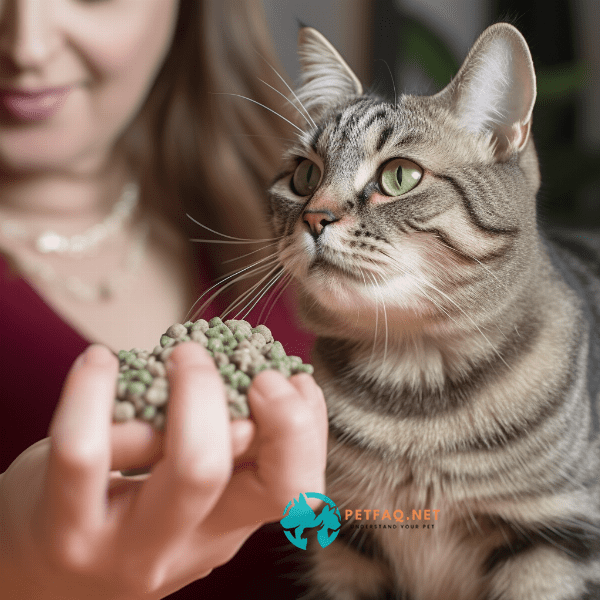
Catnip and Medical Conditions: What You Need to Know
While catnip is generally considered safe for cats, there are some medical conditions that may make it unsafe for your feline friend. In this section, we will explore some medical conditions that may affect your cat’s response to catnip.
Epilepsy
Cats with epilepsy may be more sensitive to catnip and may experience seizures or other negative reactions when exposed to it. If your cat has epilepsy, it’s important to consult with your veterinarian before giving them catnip.
Liver Disease
Cats with liver disease may have a harder time processing catnip, which could lead to negative side effects. If your cat has liver disease, it’s important to consult with your veterinarian before giving them catnip.
Pregnant or Nursing Cats
It’s important to be cautious when giving catnip to pregnant or nursing cats. While there is no evidence to suggest that catnip is harmful to pregnant or nursing cats, it’s always best to err on the side of caution and consult with your veterinarian before giving catnip to a pregnant or nursing cat.
Catnip in Multi-Cat Households: Considerations for Harmony and Safety
If you have multiple cats in your household, introducing catnip can be a fun way to engage with all of your feline friends. However, there are some considerations to keep in mind to ensure harmony and safety among your cats. In this section, we will explore some tips for introducing catnip in a multi-cat household.
Observe Your Cats’ Behavior
Before introducing catnip to your cats, it’s important to observe their behavior around each other. If your cats are generally friendly and get along well, they are likely to have a positive experience with catnip. However, if your cats are prone to aggression or territorial behavior, introducing catnip may not be the best idea.
Provide Multiple Access Points
If you have multiple cats in your household, it’s important to provide multiple access points to the catnip. This can help prevent competition and potential aggression among your cats. Consider placing catnip in several locations throughout your home and providing enough toys and resources to prevent conflict.
Monitor Your Cats’ Behavior
Once you’ve introduced catnip to your cats, it’s important to monitor their behavior closely. Some cats may become overstimulated or even aggressive when exposed to catnip, and it’s important to be mindful of any potential conflicts or issues.
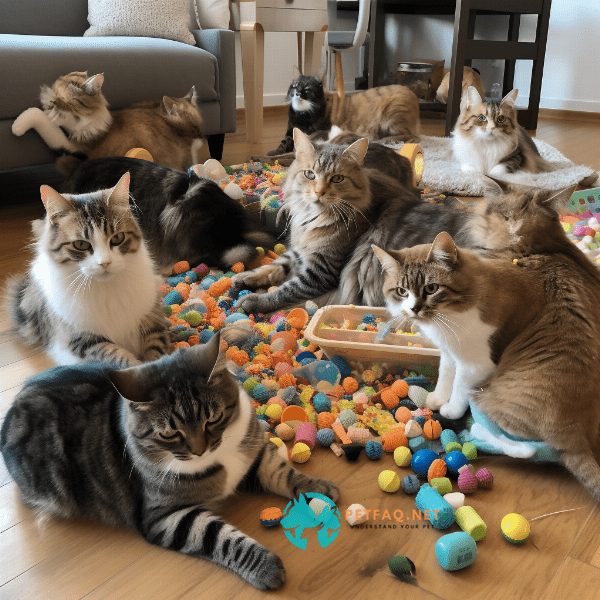
Conclusion: Understanding the Benefits and Risks of Catnip for Your Feline Friend
Catnip is a popular and safe way to engage with your feline friend, but it’s important to understand the benefits and risks of catnip for your cat. In this article, we have explored the effects of catnip on cats’ behavior and physiology, the history of catnip use in feline domestication, and common concerns and misconceptions about catnip.
We have also discussed alternatives to catnip for cat enrichment and play, as well as tips for introducing catnip to your cat safely and effectively. Additionally, we have explored medical conditions that may affect your cat’s response to catnip and considerations for introducing catnip in a multi-cat household.
Is Catnip Bad for Cats?
While there are some risks associated with catnip, such as overstimulation and upset stomachs, there is no evidence to suggest that catnip is addictive or harmful to cats in the long term. However, it’s important to use catnip in moderation and be mindful of any potential conflicts or medical conditions that your cat may have.
Benefits of Catnip
Catnip can have many benefits for your feline friend, including stress relief, anxiety reduction, and increased playfulness. Additionally, catnip can provide mental and physical stimulation, which is important for your cat’s overall health and well-being.
In conclusion, catnip can be a fun and safe way to engage with your feline friend, but it’s important to use it in moderation and be mindful of any potential risks or conflicts among your cats. By understanding the benefits and risks of catnip, you can provide your cat with a well-rounded and enriching environment that promotes their health and happiness.
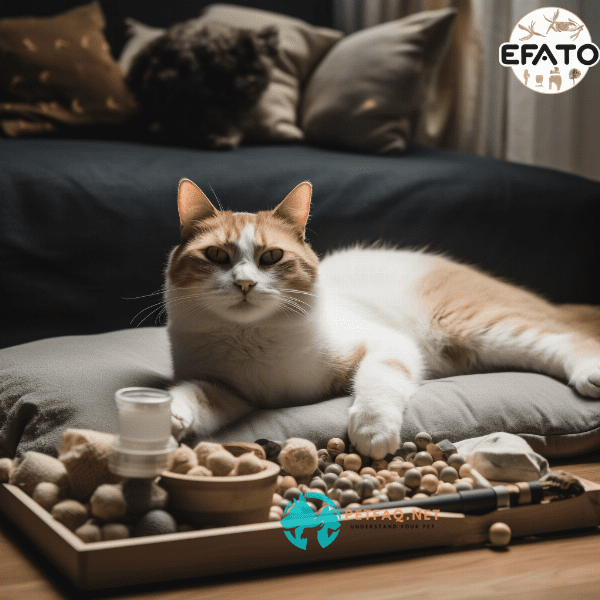
Frequently Asked Questions (FAQs) about is catnip bad for cats:
1. How much catnip is safe for cats to consume?2. How can cat owners ensure their cat's safety when giving them catnip?
3. What are the potential benefits of catnip for cats?
4. Is there a recommended dosage for giving catnip to cats?
5. Are there any risks associated with giving catnip to cats?

